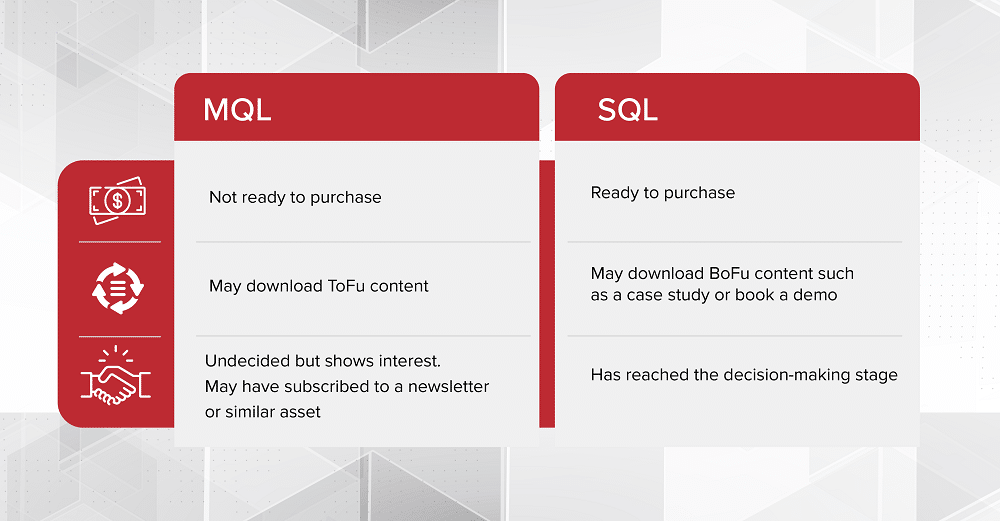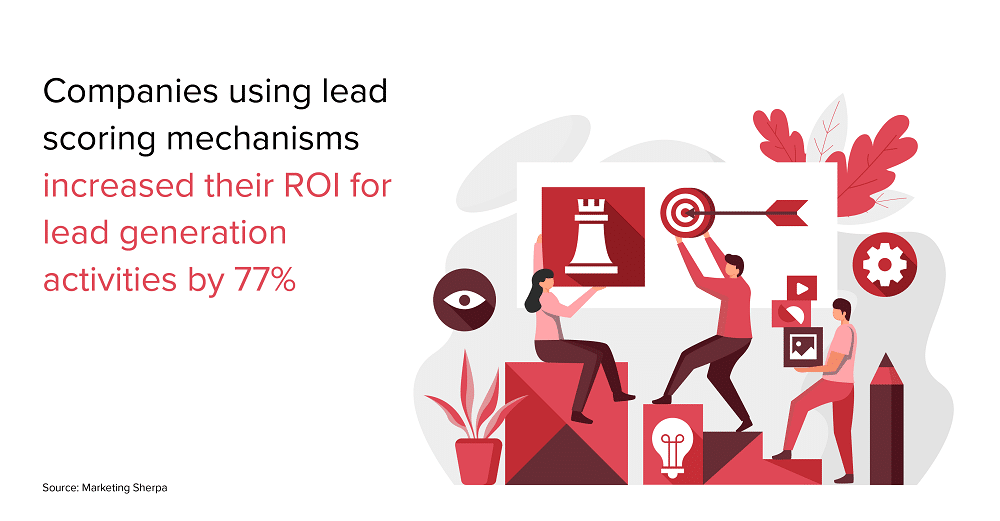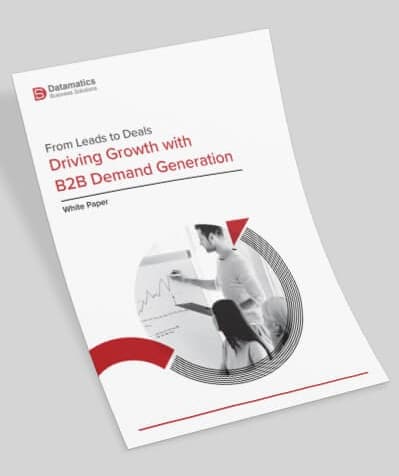In the world of marketing and sales, the journey from lead generation to closing a deal is a critical one. Two important stages in this journey are MQL (Marketing Qualified Lead) and SQL (Sales Qualified Lead). These terms are often used interchangeably, but they represent distinct stages with different characteristics and implications for sales teams.
Understanding the difference between an MQL and SQL is crucial for effective lead management and optimizing conversion rates. In this blog post, we will delve into the nuances of MQLs and SQLs, highlighting their definitions, key attributes, and how they contribute to a successful sales pipeline. Let’s demystify the MQL vs SQL debate and shed light on their respective roles in the lead qualification process.
What is a Marketing Qualified Lead (MQL)?
A marketing qualified lead is someone who expresses interest in your company, your products, or your services but might not be prepared to make a purchase. They might have visited your website, clicked on a paid ad, or downloaded an eBook on a topic related to your field of business. Their behavior does not always indicate direct purchase intent, but it does place them at the top of the marketing funnel and implies that they may be interested in learning more about your brand.
What is a Sales Qualified Lead (SQL)?
A sales qualified lead, on the other hand, is a potential customer who shows signs of interest in your business. They have interacted with your brand several times and shown an interest in more multifaceted content like pricing charts, case studies, and product comparisons. When an MQL exhibits specific signals of intent and is prepared to be contacted by your B2B sales team, they are upgraded to an SQL.
MQL vs. SQL: Piecing Together the Sales Puzzle
When your marketing team passes a lead to your sales team, it is one of the most critical points in your sales cycle. Things normally go smoothly following this handoff. However, if you hand off the prospect too soon or too late, you run the risk of completely losing them.
The categorization of MQLs and SQLs can therefore improve your sales cycle. It helps to establish a framework for figuring out when the hand off should be done. Your sales will certainly increase if you can get everyone to consistently give handoffs at the right time.
Converting an MQL to an SQL is a significant leap. According to studies, 90% of MQL sales never convert to SQLs because they were classified as an MQL far too early in the buyer’s journey.
The root cause of the issue is a misinterpretation of the MQL definition and customer behavior. Here’s how to tell the difference, including when to advance a customer to the next stage of your sales funnel:
Things to Consider While Making Your MQL & SQL Definitions
1. Lead behavior
Lead behavior plays a crucial role in distinguishing between MQL and SQL. While an MQL exhibits initial interest and engagement with your brand, an SQL displays a higher level of intent and readiness to make a purchase. An MQL may have interacted with your content, visited your website, or downloaded resources, indicating potential interest.
On the other hand, SQL showcases behaviors like requesting a demo, actively engaging with sales representatives, or displaying buying signals. By analyzing lead behavior, you can determine their stage in the buyer’s journey and prioritize efforts, accordingly, ensuring a more targeted and effective approach to conversion.
2. Lead Demographics
Lead demographics play a significant role in differentiating between MQL vs. SQL. Demographics provide valuable insights into a lead’s characteristics such as industry, company size, job title, and location. These factors help determine if a lead aligns with the target market and ideal customer profile (ICP).
In the MQL stage, demographics are used to gauge general fit and interest, while in the SQL stage, demographics help assess the lead’s potential as a sales opportunity. By analyzing lead demographics, marketing and sales teams can prioritize their efforts, tailor messaging, and allocate resources effectively, ensuring a more targeted and efficient lead qualification process.
3. Lead Scoring
Lead scoring allows marketing and sales teams to set specific criteria and thresholds for lead qualification. Leads that meet or exceed the defined scoring criteria are typically considered MQLs. These leads have demonstrated a certain level of interest and engagement with marketing activities, indicating that they are potentially ready for further lead nurturing.
Once MQLs have been identified, lead scoring continues to play a role in assessing their readiness for sales engagement. By assigning additional scores based on specific sales-related criteria, such as budget, authority, need, and timeline (BANT) leads can be further evaluated to determine if they meet the criteria for becoming SQLs. SQLs are typically passed on to the sales team for direct engagement and conversion into customers.
Lead scoring helps differentiate between MQLs and SQLs by assigning scores based on lead attributes and behaviors. It enables marketing and sales teams to prioritize their efforts, identify qualified leads, and ensure a smooth handoff from marketing to sales for effective conversion.
4. Type of conversion
The type of conversion is the x-factor in considering where a lead lies in your funnel. An MQL would be someone who downloaded a free eBook, whereas a SQL would be someone who asked for a free trial of your most recent product. The differentiating factor in this situation is the intent; you can safely assume that someone who requests a demo of your product is likely interested in making a purchase, but someone who downloads an eBook might only be seeking out more details about a specific topic.
Conversions, like leads, can be scored and categorized. In general, the more effort a lead has put into interacting with a campaign and/or offer—for example, filling out a form, submitting their email, etc.—the more likely they are a SQL.
5. Contact requests
One of the simplest ways to identify someone as MQL vs. SQL is if they request to be contacted. In the majority of interactions, the sales team will ask the lead to schedule a call or a demo. If it’s the other way around, it’s a dead giveaway that a lead should be treated as an SQL. Leads who request to be contacted show a commitment to spending time learning more about your products or services. This implies that they have already given your product or service some serious thought.
One caveat to this rule is who the lead is. Even so, it is still up to your sales team to make sure each lead or contact is in fact qualified to make a purchase.
Lead your leads, not the other way around
In B2B marketing and sales, converting MQLs to SQLs is a critical step toward increasing revenue. You can successfully convert leads into committed customers and speed up revenue growth by carefully examining a lead’s interactions with your brand, collaboration between the sales and marketing teams, and staying updated with the latest lead generation trends. Alternatively, if you wish to accelerate your buyer’s journey, you can write to us at: marketing@datamaticsbpm.com. We can help you qualify sales leads post verification on various parameters using the BANT Framework while updating your sales team with specific purchase-related insights to ensure they get what they need to close faster.
 Select an element to maximize. Press ESC to cancel.
Select an element to maximize. Press ESC to cancel.Frequently Asked Questions
Most businesses have a system in place for transferring leads from the marketing team to the sales team. Typically, a lead becomes a sales qualified lead (SQL) when it transitions from being a marketing qualified lead (MQL).
Once Marketing has guided the customer through each of the aforementioned steps and is ready to hand the customer off to sales, it becomes a SQL. The customer’s readiness, willingness, and ability to pay for the solution must then be determined by sales. Without knowing where the prospect is in the buying cycle, a MQL cannot become a SQL.
Leads that your sales executives have determined are appropriate for direct sales follow-up are known as sales qualified leads (SQL). These contacts have either responded to bottom-of-the-funnel offers like a free trial or direct sales inquiries.
A marketing qualified lead, also known as someone who is interested in your products or solution, is known as a MQL. A sales qualified lead, also known as someone who is considering purchasing, is a SQL. Because the intent of a MQL and a SQL differs, each type of lead requires a different approach in terms of outreach, advertising, and other brand messaging.

Kent Wu





